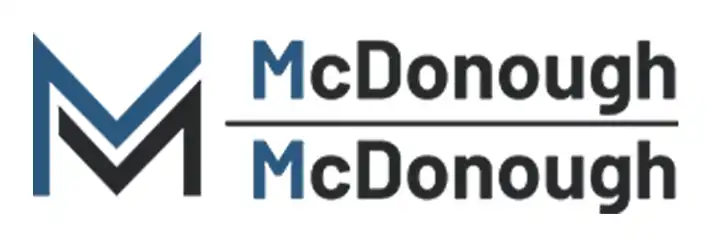Practicing in the field of grievance defense reveals one apparent and frustrating fact; that most grievances and malpractice findings are the result of mistakes rather than intentional misconduct.1 We believe that the firms that are successful in avoiding these mistakes have developed and implemented successful systems to manage most aspects of their practice. The purpose of this article is to stress the fact that systems can be highly beneficial not only to multi-attorney firms but also to small and solo practices.
There is nothing to fear in the word “systems.” In the context of running a law firm, a system is simply a way of doing a task that is clearly definable and teachable. Systems provide clarity to both the attorneys who implement the systems and the staff members who operate within the parameters set by the attorney. The best systems are created, modified, and implemented with the continued involvement and cooperation of both the attorney and the staff member(s). Not only are systems helpful to running a practice, but there is also a strong argument that systems are required by the Rules of Professional Conduct in order to meet many of the minimum ethical standards set forth therein.
Rule 1.4 of the Code of Professional Conduct sets forth various circumstances where a lawyer is required to communicate with his/her client. For example, attorneys are mandated to “keep the client reasonably informed about the status of the matter.” Rules of Professional Conduct, Rule 1.4(a)(3). Therefore, it is not just advisable to implement a system of communicating with your clients, it is required if you are to meet the communication requirement. On a practical level, satisfying this Rule can be accomplished in several ways. First, if the attorney, or the firm, has the resources, case management programs provide a great way of scheduling calls to clients on a set basis. For example, you could set up your files in such a way that each client is contacted every 3-4 weeks via phone or email. The call/email could be as simple as informing the client that nothing of substance is going on. In reality, to a client in today’s world of constant interaction, the fact that you have communicated is often just as important as the content of the communication. An attorney must be able to establish that he/she regularly communicates with his/her clients. An easy way to accomplish this would be by utilizing a case management system that records past communications and prompts future communications.
If the attorney does not have the resources to purchase a case management system, a free, self-designed system is easily created using Google products. Using the example of client contact above, an attorney could enter each client’s name in “Google Sheets,” Google’s version of a spreadsheet. In the column next to the client’s name could be multiple columns entitled “Date/notes.” In those columns, the attorney could enter the date of contact with the client and any notes regarding that conversation. This document can be modified and changed as needed. It is free, easy to use, and helps the attorney track communication with the client. A reminder to communicate with a client in the future can be entered into a separate calendar with notification capabilities.
Systems are more than just knowing how to prosecute a personal injury action or how to defend a criminal prosecution successfully. Systems can and should be applied to every aspect of your firm and practice. For example, the moment a phone call or email comes into the office from a potential client a system should apply. Indeed, your firm should have systems that apply from that point all the way through to the completion of the case when you issue your closeout letter unambiguously terminating the representation and engaging in cross-marketing.
While we will try to discuss a few generic systems that apply to most firms, please note that while every law firm should have systems in place, those systems will vary from firm to firm depending on many factors. Such factors include the firms’ practice areas, the number of lawyers, the experience of the lawyers, staffing, etc.
One system that can and should be implemented in almost every firm is establishing your mission statement and the role each member and employee plays in accomplishing that mission. Each member of your firm and your staff must understand the goals of your practice. This not only puts everyone on the same page going forward, but it also builds a stronger team feeling within your practice that should result in greater productivity and pride of effort.
One system that is essential to every law practice is your intake system. Intake starts with the phone call or other communication from a potential client or referral source. This includes such basics as which staff member(s) answer the phones, what they say when they answer, how they direct the calls, how they make and transmit messages regarding incoming calls to the appropriate staffer or attorney, and how they confirm that the potential client communication has been forwarded to the proper person or persons.
If that potential client becomes a client, you must have a retention system that includes an intake report memorializing the interaction with the client, the purpose of the retention, the potential limits of the retention, whether a case is accepted fully at that time or just for investigation, and all other pertinent information, goals, etc. Intake must include a system for a conflict check of the client and all interested, potential parties, witnesses, etc. The intake system should also provide for a rejection letter if the case is not accepted, or a referral to another lawyer as appropriate.
Once the decision to accept the client is made, you should have a system for crafting a written retainer agreement to be signed by the client, creating an appropriate file (physical or electronic), and assigning the appropriate personnel.
The next system impacted could be putting the case on a litigation track, scheduling the next meeting, calendaring a court date, etc., depending on the nature of the case and what needs to be done. You should have a system in place to assure that each new case is properly scheduled, and every important date or task memorialized; preferably on a multi-user accessible calendar system that includes regular reports and alerts as to all upcoming tasks and dates.
Perhaps the most important system should apply to escrow. The best system for dealing with escrow comports with Rule 1.15. Here is a sample system to consider:
- All checks received that are to be deposited in escrow, must be given to a specific designee/account signatory;
- A client/case ledger is created to thoroughly memorialize every financial aspect of the transaction;
- The designated attorney-signatory is responsible for depositing the check in the firm’s escrow / IOLA account at designated bank. A copy of the check and deposit slip must be given to the firm’s accountant or another designee;
- Checks for this account are blue in color and kept under lock and key. Attorney-signatories are the only firm members authorized to access these checks. The checks and deposit slips for this account shall reflect that it is the firm’s escrow account2;
- The firm shall always maintain a balance of $200.00 to cover any expenses reasonably necessary to “maintain the account or to pay account charges”3;
- Upon receipt of an escrow check, the firm shall promptly notify the client of the receipt of the check4;After depositing the check in the Bank, an entry shall be made in Quickbooks of the deposit. The entry shall identify the date, source, and description of each item deposited;
- Entries shall be made of all debits from the account that identifies the date, payee, and purpose of each withdrawal or disbursement. All entries and disbursements must be entered into the case/client ledger and the inclusive account ledger.
- The following shall be maintained for seven (7) years on the account: all checkbook and check stubs, bank statements, prenumbered canceled checks, deposit slips, wire instructions, ledgers, and any other document or record relating to funds received in trust5;
- This account must be reconciled monthly.
The purpose of this article is not to recommend or design systems for your practice or highlight every system available. As every practice is unique so are the systems necessary to achieve the goals of your firm. Our purpose is to suggest to every lawyer that systems are essential to practicing more effectively, creating a strong team environment, and avoiding grievances and malpractice claims.
Moreover, while creating systems takes time from your practice to set up, in the end properly created and managed systems will save you time, effort, and stress.
Finally, understand that the mere creation and institution of systems is not enough. The importance and necessity of your systems must be reinforced regularly and your staff’s adherence to the systems must be enforced. The lawyer responsible for managing the office must continually confirm that each member of your team understands the systems in place, understands why they are important, and is using them.
Chris McDonough is Special Counsel to Foley Griffin, LLP. Mr. McDonough has over 30 years’ experience practicing exclusively in the field of grievance defense and risk management.
Thomas J. Foley is a partner at Foley Griffin, LLP. Mr. Foley concentrates his practice on plaintiff’s personal injury and attorney grievance defense. In addition, Mr. Foley serves as an adjunct professor at St. John’s University School of Law.
NOTE: This article originally appeared in the February 2020 edition of The Nassau Lawyer and cannot be reprinted without express permission.
___________________________________________
1 While this conclusion is anecdotal, it is based upon our combined experience in the field.2 See RPC 1.15(b)(1) for specific captioning requirements.3 See RPC 1.15(b)(3).4 See RPC 1.15(c)(1).5 See RPC 1.15(d).


